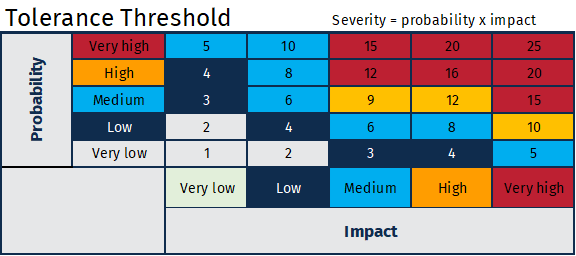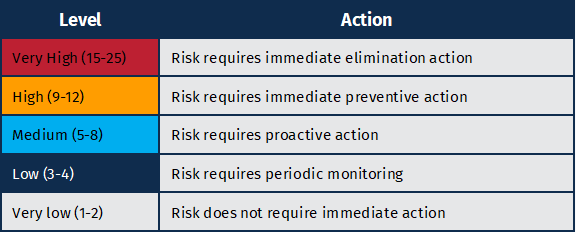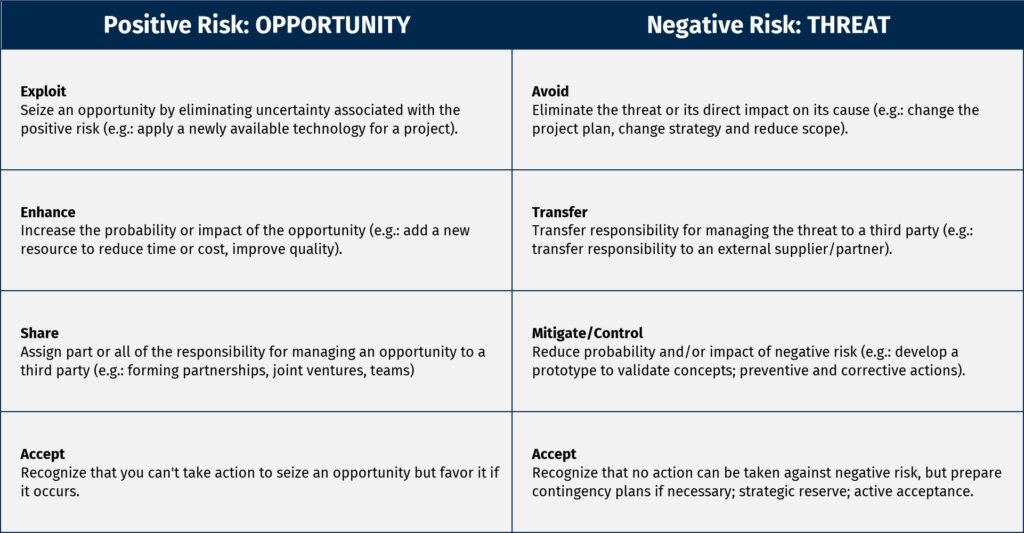
Eric Lorrain, Eng.
Industrial Consultant at Merkur
A mechanical engineer by training, Eric Lorrain spent almost 15 years working for industrial equipment manufacturers before joining Merkur. Curious and versatile, he has built production lines for local and international customers. With a strong background in machinery design and problem solving, Eric leads the implementation of assets to ensure that manufacturing companies get the production capacity they need when they need it.
Are you considering a factory expansion and are in the analysis phase? Are you managing a file to increase the connectivity of your machines or do you want to develop a new product and are in the pre-project phase? All these scenarios are new projects and have the common point of involving change. Newness often means unforeseen events!
How to prepare for it? Fortunately, there are proven approaches to managing risks.
In this article, our expert Eric Lorrain, industrial consultant at Merkur, offers you a definition of the different types of risks, as well as a 5-step method to identify, analyze, and plan a response to them to facilitate their control throughout the project.
How do we define risk?
First, let’s define what a risk is in the field of project management. A risk corresponds to an event or situation whose realization, uncertain, would have a negative impact on at least one project objective. If the impact were positive, we would substitute the term “risk” with “opportunity”!
The notion of uncertainty is crucial to the definition of a risk. If we are certain that an event will occur during a project, it is no longer a risk, but rather a constraint to be addressed in the project plan.
Why manage risks?
In the context of a project, managing risks involves identifying them, analyzing them, and then planning responses to facilitate control throughout the project. There are several good reasons to manage risks, here are a few:
- Awareness of the project in a broader context and minimizing surprises (the famous “unknown-unknowns”)
- Maximizing the chances of achieving project objectives and successful delivery
- Systematically identifying the most important risks in terms of potential consequences for the project
- Having the necessary mechanisms for all project stakeholders to rigorously and effectively manage project risks
It is important to establish a risk management mechanism early in the project when we are most able to mitigate them before they materialize, typically during the execution phase:

Managing risks in five steps
Merkur’s project managers use a five-step approach to manage the risks of the projects entrusted to them. Before starting the process, it is wise to assess the expected level of effort from the project sponsors. This level of effort is typically proportional to the scope and criticality of the project.
1. Identify risks and their causes
The risk identification stage is ideally carried out as a team with several stakeholders, to evaluate the project from a variety of perspectives and avoid groupthink. For example, here are some categories of risks that deserve attention but tend to be sometimes neglected:
- Environment: Risk associated with internal environmental phenomena (water, air, soil, noise, etc.), external natural phenomena (flooding, climatic conditions) or external accidents (dam break, nearby fire). Climate change = new probabilities
- Financial: Risk associated with poor financial condition of the client or supplier, exchange rate or price fluctuations, financial change. Can an event jeopardize the “cost” aspect of the project?
- Political: Risk associated with an external political issue (organizational change, influential stakeholder, etc.) or governmental (political stability, elections, expropriation, etc.). Does the project have an international aspect? Is there opposition?
- Health and Safety: Risk associated with a work accident or non-compliance with health and safety regulations. The impact can go far beyond the initial event, especially if it is publicized.
2. Analyze identified risks
2. Analyze identified risks
The analysis phase serves to quantify the risks identified in the previous stage, to highlight the most important ones in the context of the project in question.
A simple method consists of calculating a severity index for each risk by determining and then multiplying the scores for two factors:
- Probability that the risk will materialize (e.g., on a scale of 1 to 5)
- Impact on the project if the risk materializes (1 to 5)
Depending on the project sponsors’ tolerance for risks, the project manager will determine from which severity threshold a mitigation plan will be addressed for them:

Risk severity classification

3. Identify appropriate responses to control the most important risks
Once the risks are identified and analyzed, the next step is to determine appropriate responses for the risks requiring a mitigation plan.
Possible actions to respond to risks are as varied as the risks themselves, but they can nevertheless be grouped into four main categories:

Essentially, to determine the response to risks, it is necessary to imagine actions that will reduce the probability (preventive measures) and/or impact (contingency measures) of the considered risk.
At the end of this stage, a good practice is to group the identification, analysis, and anticipated responses to risks in a single table, a risk register, which can be kept up to date throughout the project.
4. Implement the chosen responses
Once the risk register is established, it serves as a reference for implementing actions in response to risks. At this stage, it is a matter of determining if and when actions should be undertaken:
- From the moment the risk can present itself in the project
- Based on the priority level according to the severity index of the risks
5. Monitor, evaluate, document, communicate, and archive risks throughout the project
The risk register remains a living document that serves to systematically monitor identified risks and evaluate the effectiveness of the action plan in response to them. It can be disseminated to stakeholders as needed.
Additionally, the register can be used to document the monitoring of risk symptoms throughout the project and to identify the emergence of new risks or update severity indices as new information becomes available.
Remember that risks are uncertain events that can negatively impact one or more project objectives and that there are several good reasons to manage them early in the project when we are most able to limit their impact.
With the five-step management process proposed above, you will be better able to control risks, which are an intrinsic element of the project concept, maximize your chances of success, and avoid an unfortunate event disrupting the plans in which you have put a lot of effort.
Merkur integrates risk management into the execution of its mandates and can accompany you in this sense in your manufacturing projects, thus increasing your chances of success! Our PMP certified experts can help you. Contact us!
If you want to know more about the projects carried out by Merkur, check out our achievements!